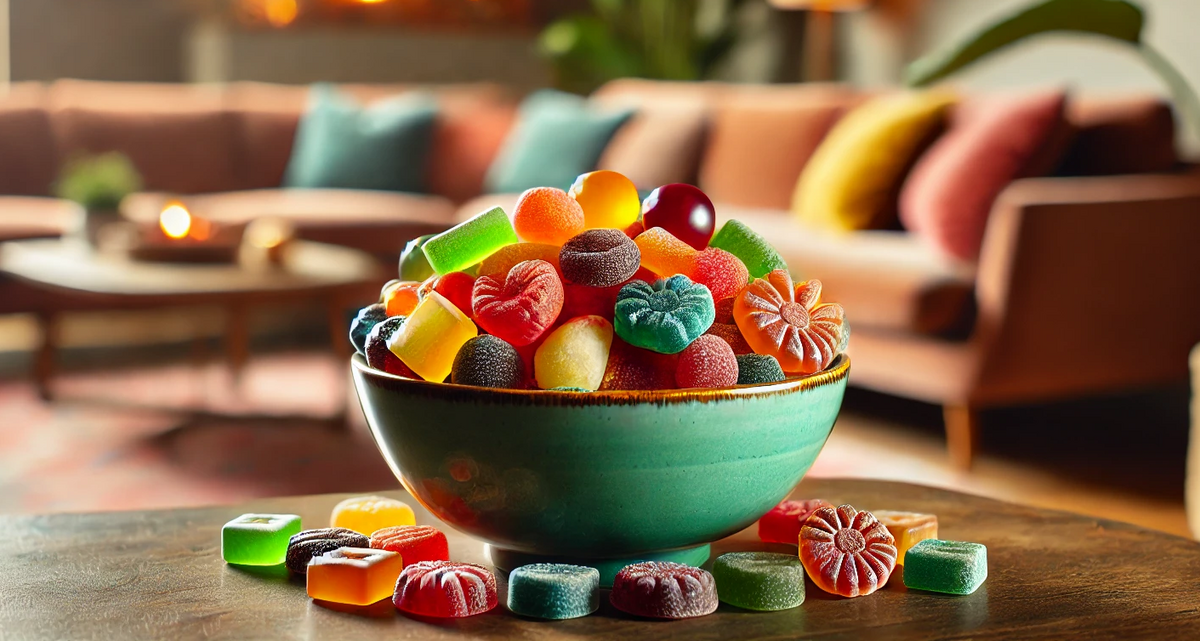
In a heavily regulated industry like CBD, where medicinal claims are restricted, effective marketing becomes an art form. The challenge lies in crafting messages that comply with the law while still capturing consumer interest. The solution? "Sell the sizzle, not the sausage." This classic marketing adage encourages brands to highlight the experience, benefits, and emotional appeal of a product rather than its technical details or unallowable claims. Here's how CBD businesses can leverage this approach to connect with their audience.

Focus on Lifestyle and Wellness
CBD products are often associated with holistic wellness and self-care. Marketers can tap into this by presenting CBD as a lifestyle choice.
For example, instead of saying, “This product helps reduce anxiety,” a brand can say, “Find your inner calm with our naturally crafted CBD oil.” This creates a compelling narrative around wellness without crossing regulatory boundaries.
CBD tea or coffee offers another perfect opportunity to showcase a lifestyle experience. Phrases like, “Sip your way to serenity with our CBD-infused blends,” or, “Discover the perfect balance of flavour and calm in every cup,” focus on the pleasurable experience of consuming the product rather than making health claims.
Appeal to Emotions
Emotional appeal is a powerful tool in any marketing strategy. People buy products not just for what they do but for how they make them feel. For CBD balms, a statement like, “Soothe your body and elevate your self-care routine,” evokes a sense of comfort and indulgence. Similarly, CBD bath products can be described as offering “a spa experience in the comfort of your home.”
These emotional hooks paint a picture of relaxation, care, and indulgence, allowing consumers to imagine the benefits without the need for direct medicinal promises.

Highlight Sensory and Experiential Appeal
Sensory language adds another layer of persuasion. For example, CBD gummies can be marketed as, “A delicious way to find your inner calm – anytime, anywhere,” focusing on their flavour and convenience. Similarly, CBD skincare can be framed as, “Glow naturally with our CBD-infused skincare – hydration meets harmony,” which highlights sensory qualities like softness and radiance.
This approach works well for products like CBD chocolates or snacks. Instead of claiming health benefits, brands can emphasise indulgence: “Savour the perfect blend of rich chocolate and CBD goodness.” Such messaging creates a craving for the experience rather than focusing on what the product might do for the body.
Showcase Quality and Sustainability
Consumers are increasingly drawn to brands that align with their values, such as sustainability and ethical sourcing. Highlighting these aspects can add significant appeal. For instance, describing a product as “Sourced from organic hemp and crafted with care” shifts the focus to quality and responsible practices.
This can be particularly effective for CBD oils, capsules, or pet products. A statement like, “Support your furry friend's wellness with our natural CBD range,” appeals to pet owners’ desire to provide their animals with high-quality, safe products, without making unverified health claims.

Incorporate Education
Education is a valuable tool for compliance-friendly marketing. Instead of making claims about what CBD can do, educate your audience on how CBD can fit into a holistic lifestyle. For example, a blog or social media post could say, “Learn how CBD can be a natural addition to your wellness routine.” This positions your brand as a trusted source of information while avoiding prohibited claims.
Create an Aspirational Identity
CBD brands can also build an aspirational identity that resonates with their audience. Marketing phrases like, “Join a community that prioritises natural wellness and mindful living with our premium CBD range,” connect the product to a broader lifestyle or movement. This fosters brand loyalty and a sense of belonging, enticing customers to engage with the brand beyond the product itself.
Practical Application
Let’s consider a CBD skincare product. Instead of claiming it “reduces inflammation,” the marketing could say, “Nurture your skin with the soothing power of nature.” This reframing shifts the focus to self-care and natural benefits, creating an emotional connection with the consumer.
Here’s a comprehensive guide to what can and cannot be said when marketing CBD products in the UK, based on regulations such as the Misuse of Drugs Act 1971, Food Safety Act 1990, Consumer Protection from Unfair Trading Regulations 2008, and MHRA guidelines:

What Can Be Said
1. General Wellness and Lifestyle
Emphasise how CBD fits into a wellness-focused or balanced lifestyle.
Examples:
"Promote a sense of calm and balance."
"A natural addition to your self-care routine."
"Crafted for those who value natural wellness."
2. Sensory Appeal
Highlight taste, smell, or sensory enjoyment.
Examples:
"Enjoy the smooth, earthy flavour of our CBD oil."
"A delicious and convenient way to enhance your day."
3. Sustainability and Quality
Promote ethical sourcing, sustainability, and product quality.
Examples:
"Sourced from organically grown hemp."
"Produced in certified facilities for the highest quality."
4. Product Features
Describe the product's composition and format without implying health benefits.
Examples:
"Contains 10 mg of CBD per serving."
"Full-spectrum CBD with natural terpenes."
5. Compliance and Testing
Highlight compliance with legal and safety standards.
Examples:
"Third-party tested for purity and quality."
"Contains less than 0.2% THC in compliance with UK law."
6. Usage Instructions
Provide factual instructions on how to use the product.
Examples:
"Take 1-2 drops under the tongue daily."
"Store in a cool, dry place."
7. Cultural or Emotional Connections
Focus on creating aspirational or emotional appeal.
Examples:
"Discover tranquillity in every drop."
"A moment of calm in your busy day."
8. Scientific Facts (Without Claims)
Share neutral, factual information about CBD without implying benefits.
Examples:
"CBD is a naturally occurring compound found in hemp plants."
"CBD interacts with the body's endocannabinoid system."
What Cannot Be Said
1. Medicinal Claims
Avoid stating or implying that the product treats, cures, or prevents any medical condition. This includes physical and mental health conditions.
Examples:
"Helps reduce anxiety."
"Relieves chronic pain."
"Improves sleep disorders."
2. Disease Prevention or Treatment
Do not claim the product can address specific illnesses or symptoms.
Examples:
"Eases arthritis pain."
"Helps with epilepsy."
"Supports immune health."
3. Implied Medical Benefits
Even indirect language that suggests medicinal effects is prohibited.
Examples:
"Great for stress relief."
"Improves focus and concentration."
4. Comparisons to Medicines
Avoid comparing CBD to prescription or over-the-counter medications.
Examples:
"A natural alternative to antidepressants."
"Works like ibuprofen for inflammation."
5. Unverified or Unsupported Claims
Any claim that cannot be backed by robust scientific evidence.
Examples:
"Clinically proven to enhance your health."
"Scientifically shown to cure insomnia."
6. Dosage and Effects
Do not state that specific dosages will result in specific outcomes.
Examples:
"Take 10 drops for best results."
"A single gummy will improve your mood."
7. Psychotropic Effects
Do not imply that the product has any psychoactive effects.
Examples:
"Feel a natural high."
"Provides an uplifting buzz."
8. Claims About THC
Avoid ambiguous language about THC levels or legality.
Examples:
"Completely free from THC."
"This product is legal everywhere."
9. Targeting Vulnerable Groups
Do not market directly to vulnerable groups such as children, pregnant women, or individuals with severe health conditions.
Examples:
"Safe for children to use."
"Perfect for expectant mothers."
10. Misleading Statements
Avoid exaggerations or misrepresentations of the product’s capabilities.
Examples:
"The best CBD product on the market."
"Guaranteed to change your life."
Tips for Compliance
Stick to Approved Language:
Use terms like “support,” “promote,” or “enhance” rather than “treat” or “cure.”
Example: "Supports a balanced lifestyle."
Focus on Customer Experience:
Use testimonials cautiously and ensure they don’t include unsubstantiated medical claims.
Provide Education Without Claims:
Share information about CBD’s origins or how it is processed, but not what it does for health.
Be Transparent:
Clearly state product composition and testing certifications to build trust.
Regularly Review Guidance:
Stay updated with advice from regulatory bodies like the FSA, MHRA, and ASA.

In the CBD industry, compliance doesn’t have to limit creativity. By focusing on the "sizzle"—wellness, sensory appeal, lifestyle integration, and ethical practices—brands can craft compelling messages that resonate with consumers while staying within legal guidelines.
Whether it’s through emotional storytelling, sensory language, or aspirational branding, "selling the sizzle" offers a path to success in a competitive market. After all, it’s not just about the product itself but the experience and values it represents.
Published - 26th November 2024






You must be logged in as a member to add comments.
Become a member
Already a member? Log in or create an account.